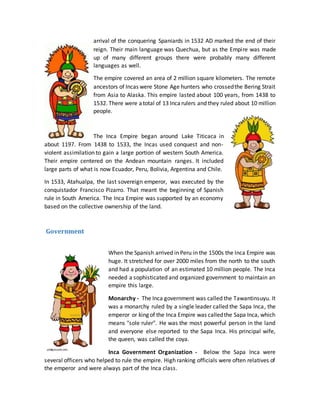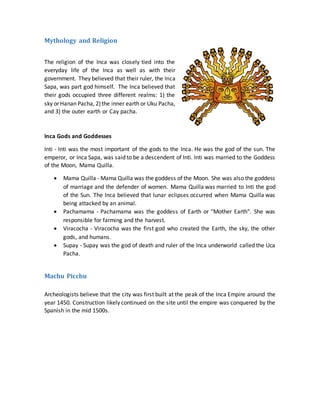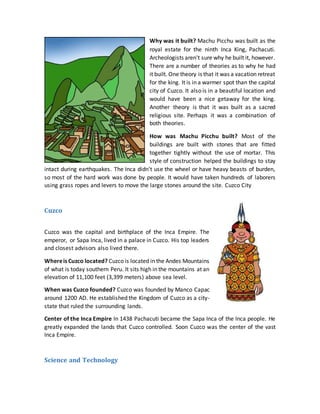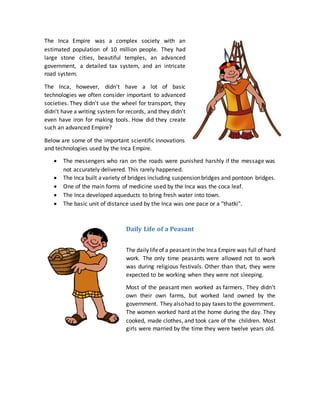The Inca civilization was a pre-Columbian empire located in western South America, with its capital at Cusco, Peru. The Inca ruled along the western coast of South America from the 12th century to the 16th century CE, when the Spanish invaded and conquered the empire. At its height, the Inca Empire stretched over 2 million square kilometers and had an estimated population of 10 million people. It featured advanced architecture, road systems, agriculture, and a complex bureaucracy centered on the Sapa Inca ruler.





